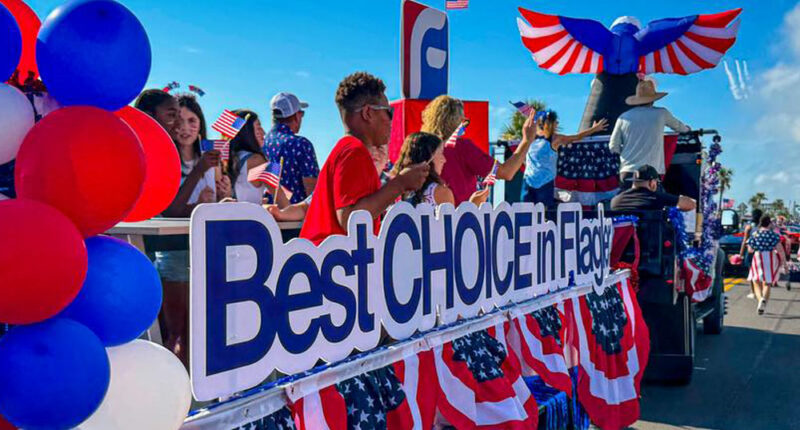
The number of Flagler County students taking public money for private, parochial or homeschool education doubled from last year to this year, from 884 to 1,606, according to the district’s latest calculations, far more than initially estimated. In spring, the district, based on state-provided figures, estimated that 1,236 students would draw on vouchers.
The 1,606 students are draining $14.2 million in public education dollars from the district had they been attending traditional public schools. The state includes that $14.2 million as a line item in Flagler schools’ budget, but only as a passthrough–and an unintended reminder of sums leaving public education.
To be sure, many of those 1,606 students–perhaps still a majority–had already been attending private school and are only now tapping into the public-money subsidy. But that proportion is diminishing as the proportion of students leaving the district for private schooling increases. Superintendent LaShakia Moore in April said the district will lose 400 students to vouchers by next fall.
The doubling continues a rapid expansion of the state voucher program while eroding the school district’s enrollment, which in March stood at 12,447 students in its nine traditional brick and mortar schools. An additional 185 attended iFlagler, the district’s virtual school, and 900 attended Imagine School at Town Center, the privately run, publicly funded charter.
The district ended its 18th straight year between the 12,000 and 13,000 student mark even though the county’s population surged by more than a third in that period. The district is estimating that about 2,000 students are attending non-public schools, likely an undercount.
The state is providing vouchers valued at anywhere from $7,300 to $34,000 a year per student for families to spend on private education. The lower amounts are for general-population students in middle and high school, rising to $8,067 for elementary-age students. The higher amounts, from $10,000 to $34,000, are for special education students such as the gifted or those with special needs. Oversight is scant. (See the breakdown by grade and diagnosis here.)
In the 2023-24 school year the district calculated that 798 students in Flagler County drew vouchers. The district this week revised the figure to 884 students, according to a document submitted to the School Board, up from 692 in 2022-23 and from 136 in 2020-21. The district’s finance office did not advertise those figures until Colleen Conklin, a school board member whose tenure ended last fall, insisted last summer that the figures be included in all budget documents.
The district as recently as this spring, based on state figures, was calculating that there would be 1,236 students using vouchers. The district revised that to 1,606 in accordance with the state’s so-called “third calculation” of the year, on which next year’s funding is based. The $14.2 million the state spent on vouchers in Flagler County this school year compares with less than $1 million spent on vouchers just four years ago.
Florida calls its voucher system “family empowerment scholarships.” Unlike most scholarships, there are no social, economic or other criteria to qualify for the money, as was the case before 2023: any student is eligible, assuming private schools have enough space. The state–and the district–also call it “choice.” Students are also eligible for vouchers through the Florida Tax Credit Scholarship, which are funded through business tax credits, drawing dollars from general state revenue. The figures presented to the Flagler school board include only family empowerment scholarship dollars–not tax credit scholarships.
In the 2023-24 school year, 369,273 students across the state took vouchers, costing taxpayers $3.18 billion. Eligibility restrictions were removed in March 2023. In the current year, the legislature allocated $3.9 billion for the two voucher programs. According to the Florida Policy Institute, a non-partisan non-profit that advocates for equity and sustainability, the ratio of state funding for public education compared to voucher funding was 88 percent to 12 percent in 2021-22. In 2025, it was 77 percent to 23 percent.









